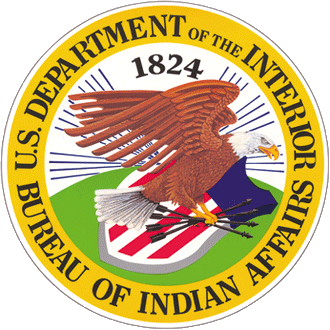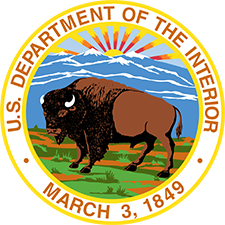WASHINGTON, DC – Secretary of the Interior Sally Jewell today delivered opening remarks at the sixth White House Tribal Nation’s Conference, where she emphasized the Obama Administration's commitment to Indian Country, including self-determination and self-governance initiatives that are helping tribal nations to build a foundation for a successful and culturally vibrant future.
“All of the work we are undertaking in partnership with tribes – whether on education, tackling climate change, or upholding trust reforms and treaty obligations – is with an eye toward the health and prosperity of the next generation,” said Secretary Jewell, who will also participate in panel discussions with tribal leaders on education and native youth, and climate change. “The White House Tribal Nations Conference is one piece of President Obama’s commitment to make meaningful and lasting progress in support of American Indians’ and Alaska Natives’ vision for a strong and successful future.”
The conference provides leaders from the 566 federally recognized tribes the opportunity to interact directly with President Obama, members of his Cabinet and other federal policy-level officials, building on the President’s commitment to strengthen our government-to-government relationship with Indian Country and to improve the livelihood of Native Americans. President Obama held the first-ever conference and has ensured that it will be an enduring, annual conference by Executive Order.
During this year’s conference, Jewell will discuss some of the progress made by the White House Council on Native American Affairs in advancing initiatives on educational reform, energy and economic development and climate change.
The Council, which is chaired by Secretary Jewell and includes the heads of more than 20 federal departments and agencies, has convened four times since its inception in June 2013 and works to improve interagency coordination and expand efforts to leverage federal programs and resources available to tribal communities.
Under a Council initiative, Secretary Jewell and Secretary of Education Arne Duncan, after consultation with tribal leaders, issued a Blueprint for Reform in June 2014 to redesign the Bureau of Indian Education (BIE). Building on the Blueprint’s recommendations, Jewell issued a Secretarial Order to begin restructuring BIE from solely a provider of education to a capacity-builder and education service-provider to tribes. The goal of this transformation is to give tribes the ability themselves to provide an academically rigorous and culturally appropriate education to their students, according to their needs.
“The heart of the matter is that no one cares more, or knows more about what’s right for young people, than their parents and their community,” said Jewell, who noted that the BIE recently awarded $1.2 million to tribes to promote tribal control of BIE-funded schools on their reservations.
Assistant Secretary for Indian Affairs Kevin K. Washburn also participated in today’s Tribal Nation’s Conference where he joined panel sessions and reaffirmed the Obama Administration’s sacred duty to uphold federal trust responsibilities and help restore tribal homelands.
“Each of the Administration's successes is progress for tribes because tribal self-determination and self-governance animate each of our programs,” said Assistant Secretary Washburn. “Our programs cannot fully succeed unless Indian tribal governments also succeed.”
He noted Jewell's second Secretarial Order focused on Indian Country and the Department’s tribal trust responsibilities – underscoring Interior’s commitment to a new chapter in government-to-government relations. The Order reaffirmed the Department’s unique, historic responsibilities and provided guidance for each of Interior agencies to carry out trust obligations to tribes and individual Indian beneficiaries.
Assistant Secretary Washburn also discussed the status of proposed changes to the Department’s federal acknowledgment regulations to improve efficiency and fairness in that process.
Jewell underscored historic settlements and progress in restoring tribal homelands through land-into-trust and the Land Buy-Back Program for Tribal Nations. In addition to the historic $3.4 billion Cobell settlement, the Administration has resolved more than 80 individual tribal trust management lawsuits for a total of $2.5 billion. The most recent settlement was announced in September and provided $554 million in settlement of long-standing trust disputes with the Navajo Nation, with some claims dating back more than 50 years.
“Resolution of historic tribal trust cases and the Cobell litigation has allowed the Department to work with Indian country on rebuilding the trust relationship in a collaborative manner, outside the adversarial atmosphere of litigation,” noted Interior Solicitor Hilary Tompkins, who also participated in the conference.
In ongoing efforts to help restore tribal homelands, Interior has completed 282 cases so far this year, taking 40,339 acres into trust for Tribes. Since 2009, more than 280,408 acres have been taken into trust on behalf of tribes, more than half way toward the Department’s goal of 500,000 acres before the end of the President’s term. Indian Affairs has also been working on regulations that would allow the Department to take land into trust in Alaska.
In addition, Interior has been carrying out the Land Buy-Back Program for Tribal Nations a program designed to buy highly fractionated land interests from willing American Indian sellers at fair market value and transfer consolidated titles to tribal governments for the beneficial use of their communities. In the last 12 months, the Program has made $754 million in offers to more than 44,000 individual landowners and restored the equivalent of more than 475,000 acres to tribes. The Department recently announced 21 additional locations where the Program will begin implementation, bringing the total number of locations actively engaged in the Buy-Back Program to 42. That total represents 83 percent of all outstanding fractionated ownership interests.
Since assuming her role at Interior, Secretary Jewell has visited more than 20 tribal communities and half a dozen Bureau of Indian Education schools. Jewell also joined President Obama and the First lady on their historic visit to Standing Rock Sioux Tribal Nation earlier this year.



